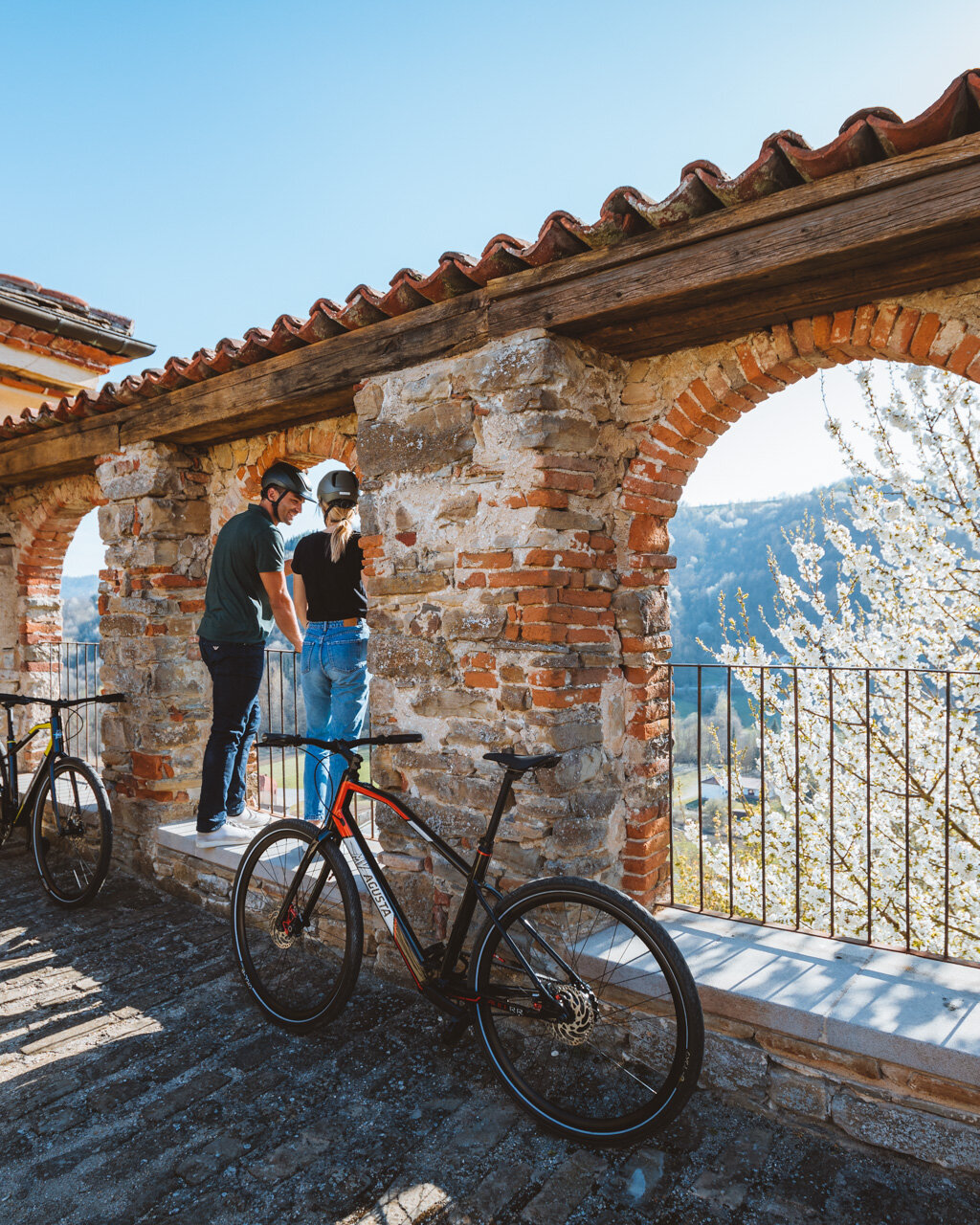Follow along Via Umberto I in the direction of Canale, leaving the Church of San Nicolao behind you, and continue along the wall of the medieval Monteu Roero Castle, which rises up from atop Mons Acutus, the tallest of the hills here, and for which the village was named. This privately-owned castle is opened for tours during “Castelli Aperti” (Open Castles) and other local events when the village opens its doors to visits of its network of underground wine cellars. A visit to the castle is a great opportunity to get a feel for what life must have been like in the Middle Ages, especially in the manor’s inner courtyard, and to admire the wonderful frescoes on the main floor.
As the road narrows, you will come to the Church of San Bernardino, facing the climb up to the castle. Continue along the road, then turn right after a few steps at a downhill switchback, where you will see a frescoed shrine on your right surrounded by a hedge, whereas to your left there is an impressive rock wall. Here, you will begin following “Sentiero dei Fossili” (Fossil Trail) in the opposite direction along highway SP 29 in the direction of Tre Rivi. Before a sharp switchback, take a narrow, paved road to the right, which soon turns to dirt and takes you through vineyards, cultivated fields and strawberry farms to the base of the valley at Tre Rivi. A large ciabòt clinging to a hill, surrounded by vineyards, guards this section of the trail. The structure was built over the remains of the Pulciano Castle, which was lost nearly a millennium ago and was replaced by the current medieval manor, and is one of the most photographed scenes in the entire area.
Once back at highway SP 29, near an information panel, leave the “Sentiero dei Fossili” to the right in the direction of Montaldo Roero. After about 50 metres, leave the paved road again to follow a dirt road to the left, which briefly runs parallel to the main highway through the fields, before heading up gradually through the vineyards as it zigzags through small hamlets and past lovely farmhouses to the top of the hill and the houses of S. Vincenzo and Occhetti. When you reach highway SP 257, turn right onto the paved road and continue on until you reach “Sentiero del Tasso” (Badger Trail) near the hamlet of Cà Violi.
Continue along the main highway, then in a few hundred metres, at a sharp curve to the left, turn right onto a flat dirt road, where there is a wayside shrine that is now half buried by the raised surface of the road. From here, you can follow the markers for “Sentiero del Tasso”, dedicated to the badgers that enjoy an ideal habitat in these woods and numerous dens of which have been sighted along this trail. Continue through the cool of this trail for about 300 metres, then turn left up a lovely climb through shady woods and vineyards. This area, known as Vadolmo, is important for the fossil of a mastodon’s leg bone that was found here and which dates back to the Pleistocene era. This fossil is now kept at the Roero Nature Museum in Vezza d’Alba. The trail then passes through characteristically dry woods of downy oak and Scots pine to reach the crest of the hill. This section ends near Cascina Battagli, where “Sentiero del Tasso” meets “Sentiero del Roero Centrale” (S4) on the Monticello– Vezza d’Alba leg of the Roero Bike Tour (Leg 5).
PLEASE NOTE: Responsibility for the maintenance and practicability of the various trails lies with the municipalities where the routes are located. The Tourist Board, therefore, cannot be held responsible for any inefficiencies, but is willingly available to collect your reports so that they can be forwarded to the authorities concerned.


